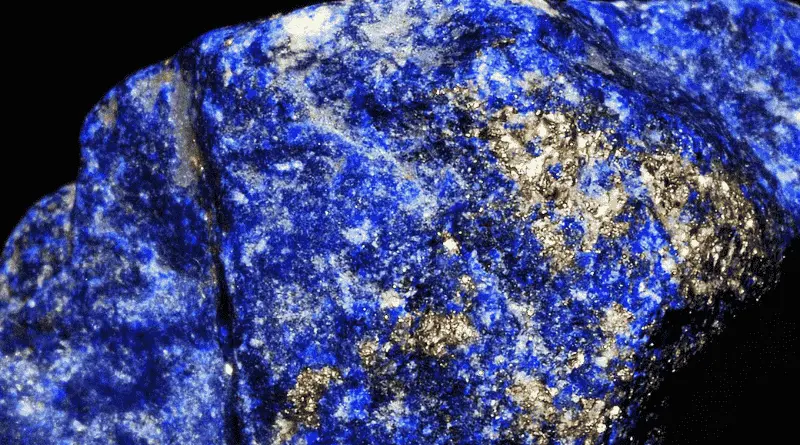Lapis Lazuli: A Gem of Legends and Lore
INTRODUCTION:
Lapis lazuli, with its rich blue hue and history as deep as its color, is a gemstone that has captured the imagination of cultures and civilizations for millennia. In this article, we delve into the world of lapis lazuli, exploring its legends, symbolism, and its presence in myths and ancient texts.
| Main Points | Description |
|---|---|
| The Legend of Lapis Lazuli | Lapis lazuli’s legendary history, from ancient Mesopotamia to its association with Egyptian mythology and its use as a precious pigment. |
| Symbolism of Lapis Lazuli | The symbolism of lapis lazuli, including wisdom, truth, inner peace, communication, protection, creativity, and its association with royalty. |
| Lapis Lazuli in Ancient Texts | The mention of lapis lazuli in the epic of Gilgamesh and its significance in ancient Mesopotamian culture. |
| Greek God and Lapis Lazuli | The association of lapis lazuli with the Greek god Zeus and its presence in his protective breastplate, the “aegis.” |
| The Timeless Beauty of Lapis Lazuli | The symbolism of lapis lazuli, includes wisdom, truth, inner peace, communication, protection, creativity, and its association with royalty. |
The Legend of Lapis Lazuli
Lapis lazuli has a legendary history dating back thousands of years. In ancient Mesopotamia, this gem was cherished for its celestial blue color. Which was believed to be a reflection of the heavens. The Sumerians, one of the earliest known civilizations, referred to This stone as “The Stone of Heaven.”
In Egyptian mythology, This stone was associated with the goddess Isis and was believed to offer protection, both in this life and the afterlife. It was often used in burial masks and tomb decorations to guide the souls of the departed to the realm of the gods.
In the Middle Ages, lapis lazuli was ground into a fine powder and used to create ultramarine. One of the most expensive and sought-after pigments in the world. This blue pigment was used by renowned artists such as Leonardo da Vinci and Michelangelo, adding to the gem’s mystique.
Symbolism of Lapis Lazuli
Lapis lazuli carries a wealth of symbolism, often associated with qualities and values that have transcended time and culture:
Wisdom and Truth: This stone is considered a symbol of wisdom and truth. It encourages self-awareness, introspection, and a deeper understanding of one’s inner self.
Inner Peace: This gemstone is believed to promote inner peace and harmony, making it a popular choice for meditation and spiritual practices.
Communication and Expression: This stone is thought to enhance communication skills and encourage open and honest expression of thoughts and feelings.
Protection: Across various cultures, This stone has been associated with protective properties. Guarding against negative energies and promoting a sense of security.
Creativity: It is also linked to creativity and artistic inspiration, making it a favorite among artists and writers.
Royalty and Power: Throughout history, This stone was reserved for royalty and those in positions of power. It symbolized wealth, status, and influence.
Lapis Lazuli in Ancient Texts
One of the most famous literary references to This stone can be found in the Epic of Gilgamesh. One of the earliest known works of literature. In the story, This stone is mentioned as a precious stone used in the construction of a magnificent gate.
“The seventh (layer) … was lapis lazuli, and the wall of the seventh (layer) of Uruk … shone out over all the other (lower) mountains.”
The mention of This stone in the epic underscores its significance as a symbol of beauty and grandeur in ancient Mesopotamia.
Greek God and Lapis Lazuli
In Greek mythology, lapis lazuli is linked to the god Zeus. It was believed that This stone was one of the stones used in the breastplate of Zeus. Often referred to as the “aegis.” This breastplate was thought to offer protection and invincibility to the god of thunder and lightning.
The Timeless Beauty of Lapis Lazuli
Lapis lazuli’s enduring appeal lies not only in its history and symbolism but also in its exquisite beauty. Its deep blue color, often flecked with golden pyrite, is a testament to the wonders of the natural world.
Whether worn as jewelry or admired for its artistic and cultural significance. This stone continues to captivate hearts and minds across the globe. It remains a gemstone of legends and lore, a stone that bridges the past with the present. And a gem that invites us to explore the depths of our own inner worlds.
For more intriguing insights into precious stones and their fascinating histories. Visit 7 Precious Stones Revealed: Unlocking the Mystery to uncover the secrets of other extraordinary gems.

